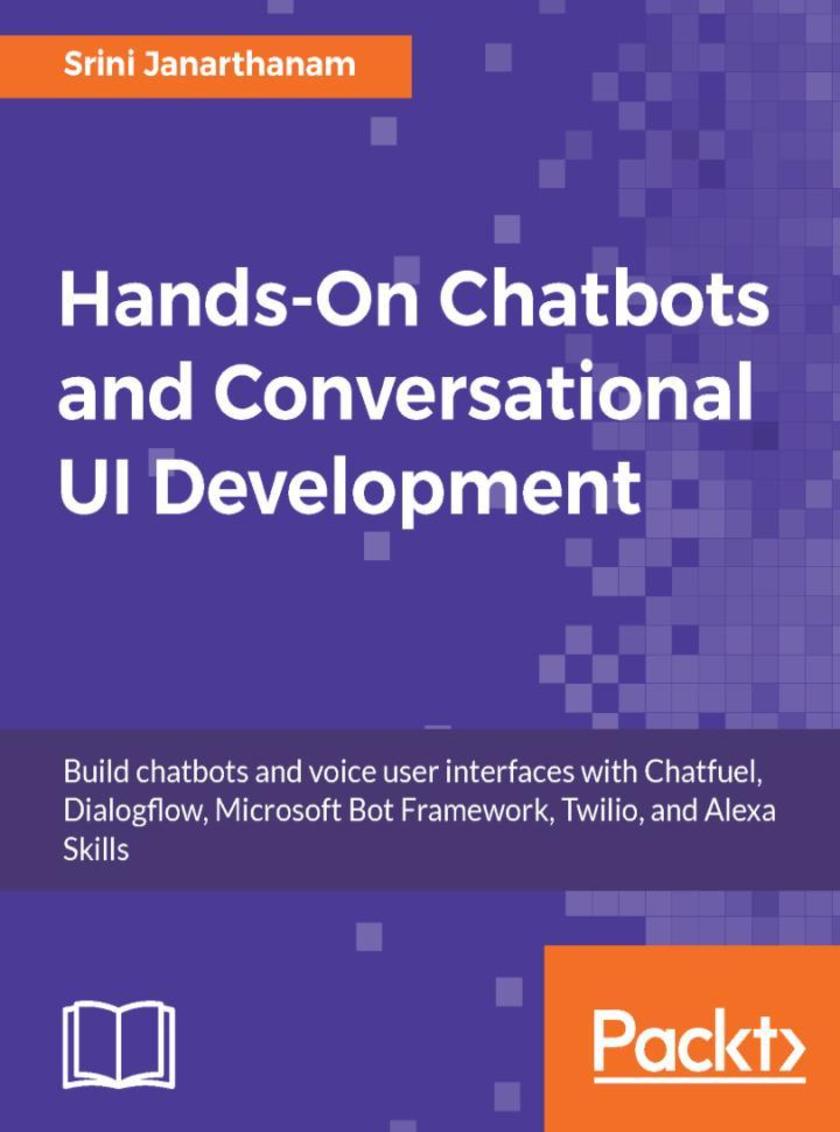
Hands-On Chatbots and Conversational UI Development
¥71.93
Build over 8 chatbots and conversational user interfaces with leading tools such as Chatfuel, Dialogflow, Microsoft Bot Framework, Twilio, Alexa Skills, and Google Actions and deploying them on channels like Facebook Messenge, Amazon Alexa and Google Home About This Book ? Understand the different use cases of Conversational UIs with this project-based guide ? Build feature-rich Chatbots and deploy them on multiple platforms ? Get real-world examples of voice-enabled UIs for personal and home assistance Who This Book Is For This book is for developers who are interested in creating interactive conversational UIs/Chatbots. A basic understanding of JavaScript and web APIs is required. What You Will Learn ? Design the flow of conversation between the user and the chatbot ? Create Task model chatbots for implementing tasks such as ordering food ? Get new toolkits and services in the chatbot ecosystem ? Integrate third-party information APIs to build interesting chatbots ? Find out how to deploy chatbots on messaging platforms ? Build a chatbot using MS Bot Framework ? See how to tweet, listen to tweets, and respond using a chatbot on Twitter ? Publish chatbots on Google Assistant and Amazon Alexa In Detail Conversation as an interface is the best way for machines to interact with us using the universally accepted human tool that is language. Chatbots and voice user interfaces are two flavors of conversational UIs. Chatbots are real-time, data-driven answer engines that talk in natural language and are context-aware. Voice user interfaces are driven by voice and can understand and respond to users using speech. This book covers both types of conversational UIs by leveraging APIs from multiple platforms. We'll take a project-based approach to understand how these UIs are built and the best use cases for deploying them. We'll start by building a simple messaging bot from the Facebook Messenger API to understand the basics of bot building. Then we move on to creating a Task model that can perform complex tasks such as ordering and planning events with the newly-acquired-by-Google Dialogflow and Microsoft Bot framework. We then turn to voice-enabled UIs that are capable of interacting with users using speech with Amazon Alexa and Google Home. By the end of the book, you will have created your own line of chatbots and voice UIs for multiple leading platforms. Style and approach This is a practical book, where each chapter focuses on a chatbot project. The chapters take a step-by-step approach to help you build intelligent chatbots that act as personal assistants.
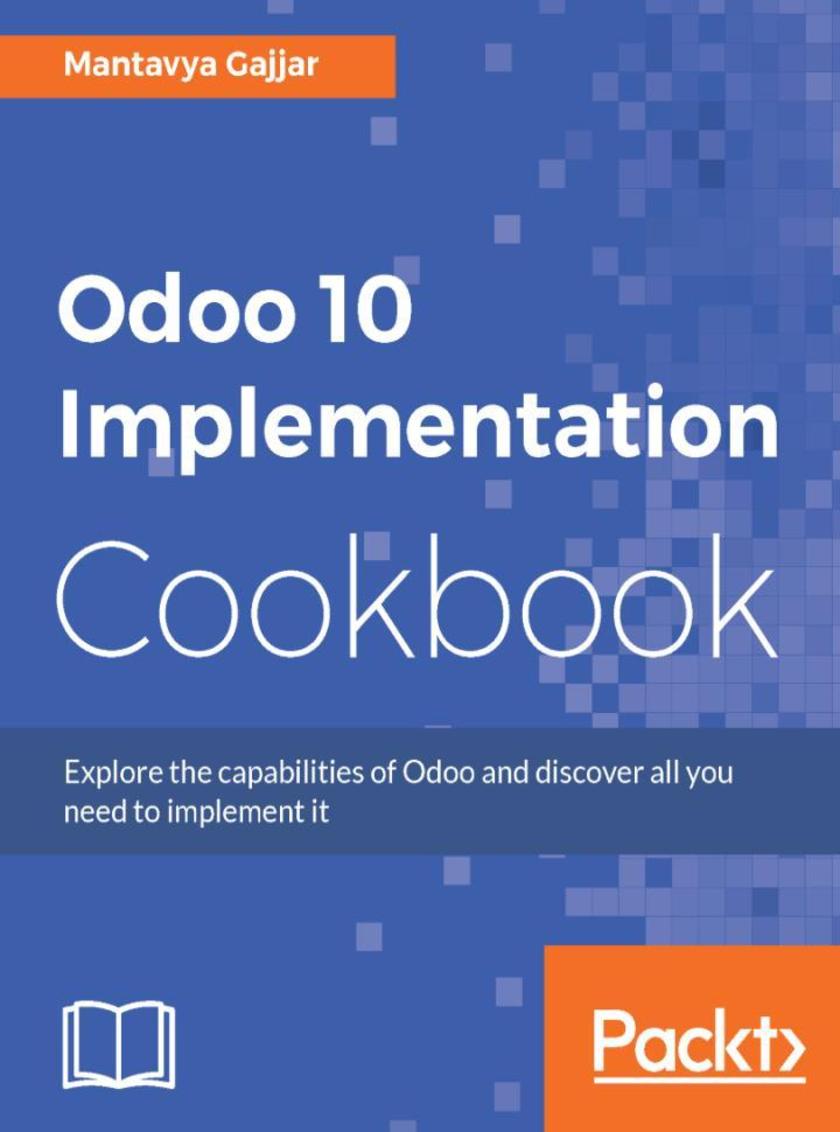
Odoo 10 Implementation Cookbook
¥99.18
Comprehensive tasks covering Odoo 10 in the right way About This Book ? Reduce implementation costs and improve major benchmarks relating to storage space and speed. ? Implement the approval hierarchy and user and access rights, configure the company and language, and so on. ? Cover all platforms such as mobile, web, content management, and e-commerce. Who This Book Is For This book is targeted towards Odoo functional users and project managers who would like to use it for their organization. No expertise in Odoo is required. What You Will Learn ? Learn the modern way of doing sales and managing sales contracts. ? Create and configure your products and manage your sales quotations ? Set up an online shop and start selling online with Odoo eCommerce ? Manage multi-currency transactions and create a deferred revenue plan and link it with products ? Administer vendors and products and request quotations, confirm orders, and get them delivered ? Manage quality control in the warehouse and manual and real-time inventory stock valuations. ? Manage projects and project forecasting via grid and Gantt views ? Implement Human Resource apps and manage the employee appraisal process ? Manage Workcenters and the product lifecycle ? Track worker activity with tablets and launch new changes in production In Detail Odoo is a Python-based ERP system and is completely open source. Odoo is a comprehensive suite of business applications offering a wealth of functionalities that can be deployed to meet your business needs. This book will help you manage the different functionalities of your business and optimize it. You will learn in detail about the various facets of the business process such as sales, accounting, purchases, manufacturing, and inventory. We will cover each of these topics in detail and learn how Odoo handles all these tasks with much ease. With its modular approach, you will be able to build customized solutions, take advantage of the Odoo 10 system in your organization, and master basic administration. We will cover modules and applications in Odoo that will help optimize quality checks. You will also be able to customize major reporting functions for your teams and set up forms and documents for sales, purchase, inventory, and so on. By the end of the book, you will be able to use the major functionalities of Odoo 10 and fully implement them into your business. Style and approach The book follows a recipe-based format; the recipes are filled with real-world use cases and various functional topics.
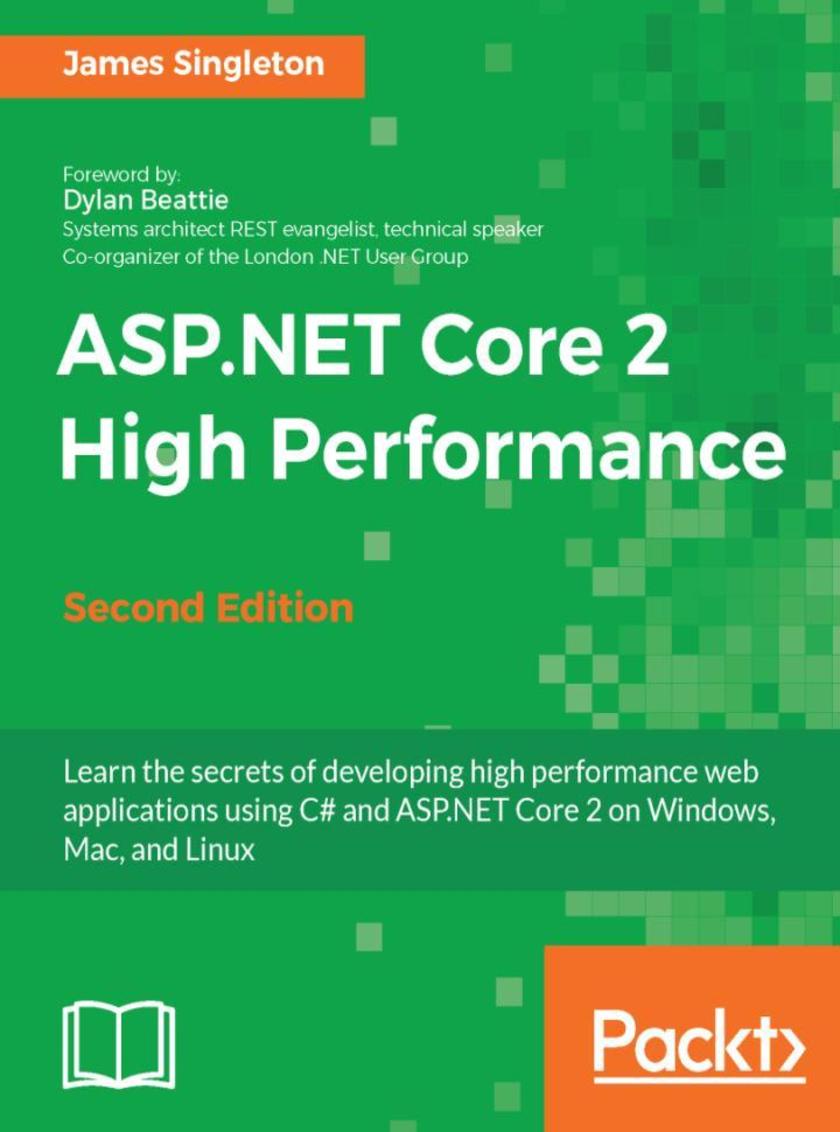
ASP.NET Core 2 High Performance - Second Edition
¥90.46
Learn how to develop web applications that deploy cross-platform and are optimized for high performance using ASP.NET Core 2 About This Book ? Master high-level web app performance improvement techniques using ASP.NET Core 2.0 ? Find the right balance between premature optimization and inefficient code ? Design workflows that run asynchronously and are resilient to transient performance issues Who This Book Is For This book is aimed for readers who can build a web application and have some experience with ASP.NET or some other web application framework (such as Ruby on Rails or Django). They can be people who are happy learning details independently but who struggle to discover the topics that they should be researching. The reader should be interested in improving the performance of their web app and in learning about ASP.NET Core and modern C#. What You Will Learn ? Understand ASP.NET Core 2 and how it differs from its predecessor ? Address performance issues at the early stages of development ? Set up development environments on Windows, Mac, and Linux ? Measure, profile and find the most significant problems ? Identify the differences between development workstations and production infrastructures, and how these can exacerbate problems ? Boost the performance of your application but with an eye to how it affects complexity and maintenance ? Explore a few cutting-edge techniques such as advanced hashing and custom transports In Detail The ASP.NET Core 2 framework is used to develop high-performance and cross-platform web applications. It is built on .NET Core 2 and includes significantly more framework APIs than version 1. This book addresses high-level performance improvement techniques. It starts by showing you how to locate and measure problems and then shows you how to solve some of the most common ones. Next, it shows you how to get started with ASP.NET Core 2 on Windows, Mac, Linux, and with Docker containers. The book illustrates what problems can occur as latency increases when deploying to a cloud infrastructure. It also shows you how to optimize C# code and choose the best data structures for the job. It covers new features in C# 6 and 7, along with parallel programming and distributed architectures. By the end of this book, you will be fixing latency issues and optimizing performance problems, but you will also know how this affects the complexity and maintenance of your application. Finally, we will explore a few highly advanced techniques for further optimization. Style and approach A step-by-step practical guide filled with real-world use cases and examples
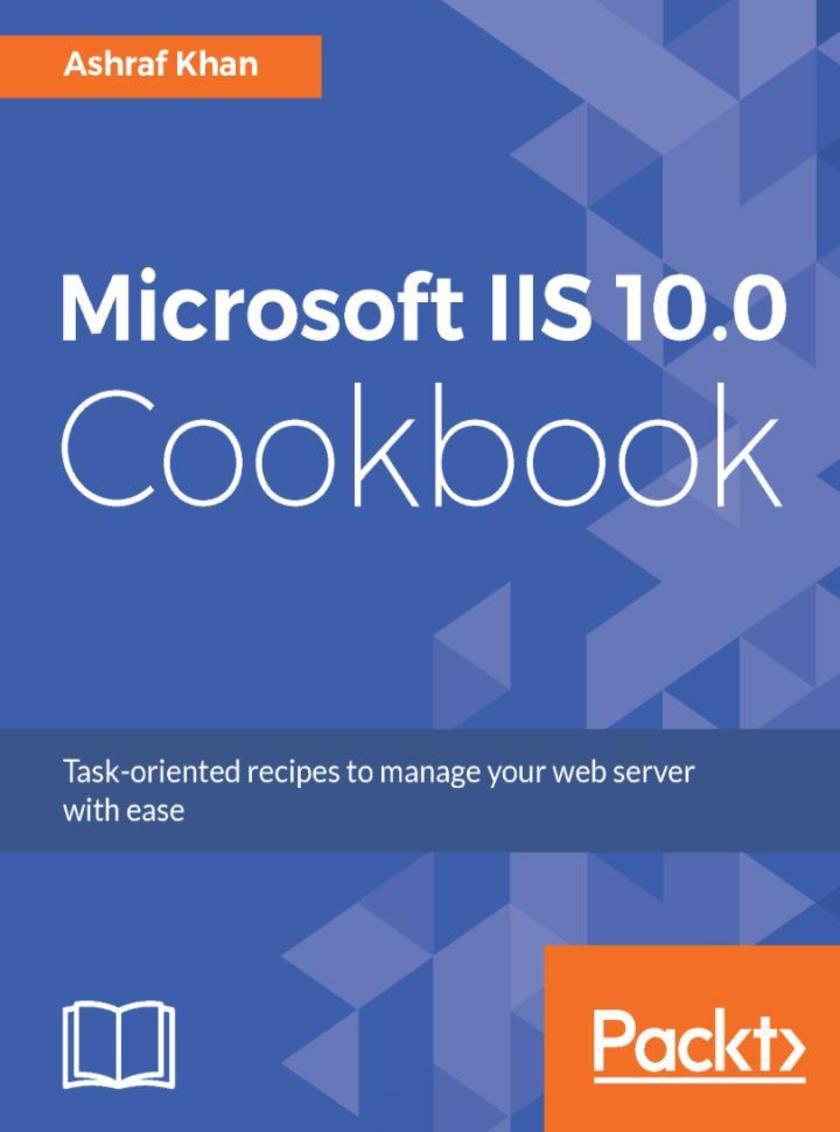
Microsoft IIS 10.0 Cookbook
¥90.46
Over 60 recipes to install, configure, and manage your IIS 10.0 About This Book ? Provide a secure, easy-to-manage extensible platform for hosting your websites ? Leverage IIS 10.0 in order to deploy web site in seconds ? Integrate Windows and Nano Server 2016 and automate it with PowerShell ? Recipes to Manage and monitor your IIS 10.0 Who This Book Is For If you are an administrator or web developer with a basic (or no) knowledge of Microsoft IIS and want to set up your own web server, then this is the book for you. What You Will Learn ? Integrate IIS 10.0 on Windows server 2016 ? Host multiple websites and Wildcard Host on IIS 10.0 ? Deploy and administrate IIS 10.0 on Nano Server. ? IIS administration with Powershell. ? Manage and troubleshoot IIS 10.0 In Detail This book will start with customizing your IIS 10 to various platforms/OS and tune it according to your business requirements. Moving on, we will focus on the functionalities of core fundamentals and perform practical scenarios in order to maximize the use of a reliable web server. Going further we will be covering topics like IIS 10 architecture, IIS modules,hosting web server platforms, virtual directories along with web site deployment, ports, enhanced security. We will also cover new features of IIS 10 like integration with Windows Server 2016 and Nano Server, HTTP/2, PowerShell 5 cmdlets etc . Towards the end, we will cover troubleshooting & diagnostic techniques of IIS 10. By the end of this book you will be well versed with maximizing the reliability of your webserver and will have immense knowledge in using IIS 10 effectively Style and approach A set of exciting recipes on using Microsoft IIS 10.0 effectively..
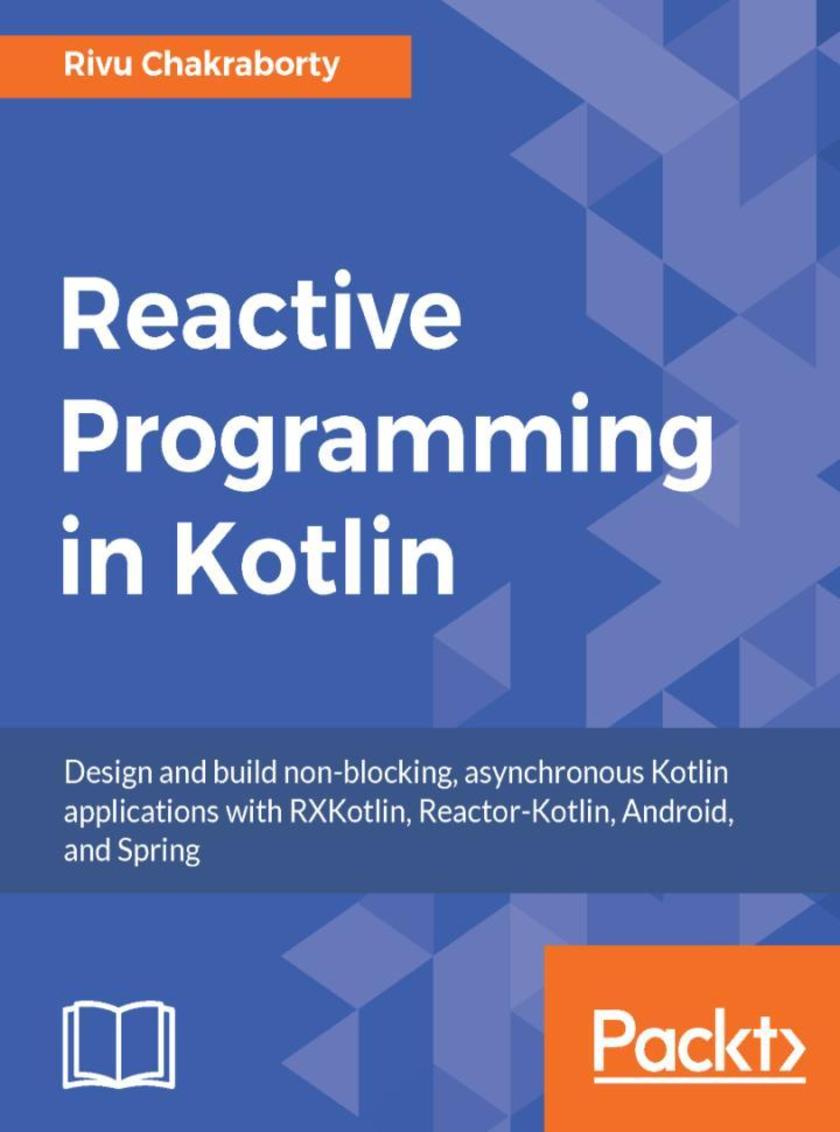
Reactive Programming in Kotlin
¥80.65
Learn how to implement Reactive Programming paradigms with Kotlin, and apply them to web programming with Spring Framework 5.0 and in Android Application Development. About This Book ? Learn how to solve blocking user experience with Reactive Programming and get deep insights into RxKotlin ? Integrate Reactive Kotlin with Spring and build fantastic Android Apps with RxKotlin and RxAndroid ? Build reactive architectures that reduce complexity throughout the development process and make your apps(web and Android) scalable Who This Book Is For This book is for Kotlin developers who would like to build fault-tolerant, scalable, and distributed systems. A basic knowledge of Kotlin is required, but no prior knowledge of reactive programming. What You Will Learn ? Learn about reactive programming paradigms and how reactive programming can improve your existing projects ? Gain in-depth knowledge in RxKotlin 2.0 and the ReactiveX Framework ? Use RxKotlin with Android ? Create your own custom operators in RxKotlin ? Use Spring Framework 5.0 with Kotlin ? Use the reactor-kotlin extension ? Build Rest APIs with Spring,Hibernate, and RxKotlin ? Use testSubscriber to test RxKotlin applications ? Use backpressure management and Flowables In Detail In today’s app-driven era, when programs are asynchronous, and responsiveness is so vital, reactive programming can help you write code that’s more reliable, easier to scale, and better-performing. Reactive programming is revolutionary. With this practical book, Kotlin developers will first learn how to view problems in the reactive way, and then build programs that leverage the best features of this exciting new programming paradigm. You will begin with the general concepts of Reactive programming and then gradually move on to working with asynchronous data streams. You will dive into advanced techniques such as manipulating time in data-flow, customizing operators and provider and how to Use the concurrency model to control asynchronicity of code and process event handlers effectively. You will then be introduced to functional reactive programming and will learn to apply FRP in practical use cases in Kotlin. This book will also take you one step forward by introducing you to spring 5 and spring boot 2 using Kotlin. By the end of the book, you will be able to build real-world applications with reactive user interfaces as well as you’ll learn to implement reactive programming paradigms in Android. Style and Approach Loaded with numerous code examples and real-life projects, this book helps you delve into Reactive Programming with Kotlin, and apply it to real-world Spring-web and Android projects, thus making all your apps reactive.

Learning C# 7 By Developing Games with Unity 2017 - Third Edition
¥90.46
Develop your first interactive 2D and 3D platformer game by learning the fundamentals of C# About This Book ? This is a step-by-step guide to learn the fundamentals of C# 7 *ing to develop GameObjects and master the basics of the new UI system in Unity ? Build and develop your 2D game right from scratch while implementing the principles of object-oriented programming and coding in C# 7 ? Get to grips with the fundamentals of optimizing your game using the latest features of Unity 2017 Who This Book Is For The book is targeted at beginner level Unity developers with no programming experience. If you are a Unity developer and you wish to learn how to write C# *s and code by creating games, then this book is for you. What You Will Learn ? Learn C# 7 using new features like tuples, variables, and non-nullable reference types while building games ? Understand the fundamentals of variables, methods, and code syntax in C# ? Use loops and collections efficiently in Unity to reduce the amount of code ? Develop a game using the object-oriented programming principles ? Implement simple enemy characters into the game to learn point to point movement and Tree behaviors ? Avoid performance mistakes by implementing different optimization techniques ? Export 3D models and 3D animations and import them inside a Unity project ? With your new knowledge of coding, you will be able to look at Unity's Scripting Reference code examples with confidence In Detail With the latest version of Unity 2017 released, are you interested in developing creative and interactive games while learning C# alongside? Then this is the book that you are looking for. Its all about offering you a fun introduction to the world of game programming with C#. You’ll start with the basics to get started with C# 7 and its latest features. Then you’ll see how to use C# 7 and its latest functional programming capabilities to create amazing games with Unity 2017. You’ll create your first C# * for Unity, add objects into it, and learn how to create game elements with them. Then you’ll work with the latest functional programming features of C# and how to leverage them for great game *ing. Throughout the book, you’ll learn to use the new Unity 2017 2D tool set and create an interactive 2D game with it. You will make enemies appear to challenge your player, and go through some optimization techniques to ensure great game performance. At the end, your 2D game will be transformed into 3D, and you’ll be able to skill up to become a pro C# programmer with Unity 2017! Style and approach The book takes a practical, step-by-step approach where you learn C# coding while developing fun and interactive games.
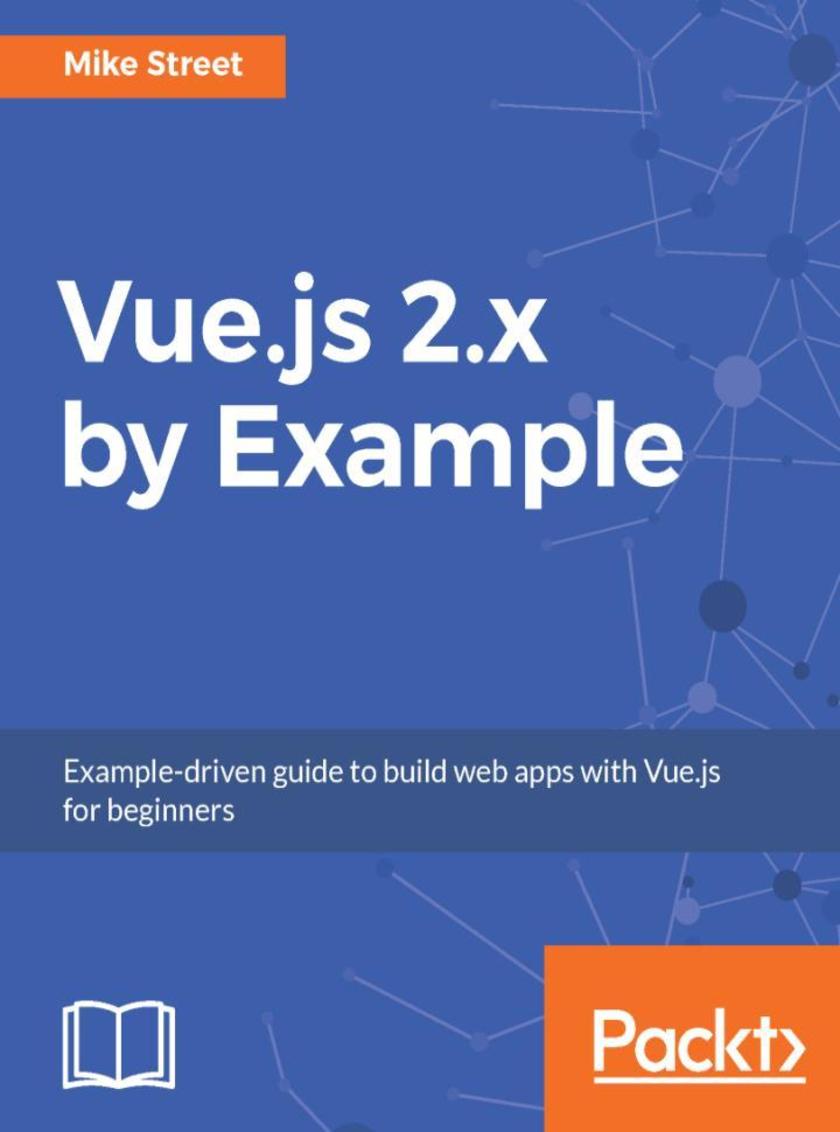
Vue.js 2.x by Example
¥90.46
Learn the fundamentals of vue.js by creating complex SPAs with Vuex, vue-router and more About This Book ? We bridge the gap between "learning" and "doing" by providing real-world examples that will improve your web development skills with Vue.js ? Explore the exciting features of Vue.js 2 through practical and interesting examples ? Explore modern development tools and learn how to utilize them by building applications with Vue.js Who This Book Is For This book is for developers who know the basics of JavaScript and are looking to learn Vue.js with real examples. You should understand the basics of JavaScript functions and variables and be comfortable with using CSS or a CSS framework for styling your projects. What You Will Learn ? Looping through data with Vue.js ? Searching and filtering data ? Using components to display data ? Getting a list of files using the dropbox API ? Navigating through a file tree and loading folders from a URL ? Caching with Vuex ? Pre-caching for faster navigation ? Introducing vue-router and loading components ? Using vue-router dynamic routes to load data ? Using vue-router and Vuex to create an ecommerce store In Detail Vue.js is a frontend web framework which makes it easy to do just about anything, from displaying data up to creating full-blown web apps, and has become a leading tool for web developers. This book puts Vue.js into a real-world context, guiding you through example projects that helps you build Vue.js applications from scratch. With this book, you will learn how to use Vue.js by creating three Single Page web applications. Throughout this book, we will cover the usage of Vue, for building web interfaces, Vuex, an official Vue plugin which makes caching and storing data easier, and Vue-router, a plugin for creating routes and URLs for your application. Starting with a JSON dataset, the first part of the book covers Vue objects and how to utilize each one. This will be covered by exploring different ways of displaying data from a JSON dataset. We will then move on to manipulating the data with filters and search and creating dynamic values. Next, you will see how easy it is to integrate remote data into an application by learning how to use the Dropbox API to display your Dropbox contents in an application In the final section, you will see how to build a product catalog and dynamic shopping cart using the Vue-router, giving you the building blocks of an e-commerce store. Style and approach This book takes you three projects, with step-by-step instructions to help you understand the concepts of Vue and put it into practice.
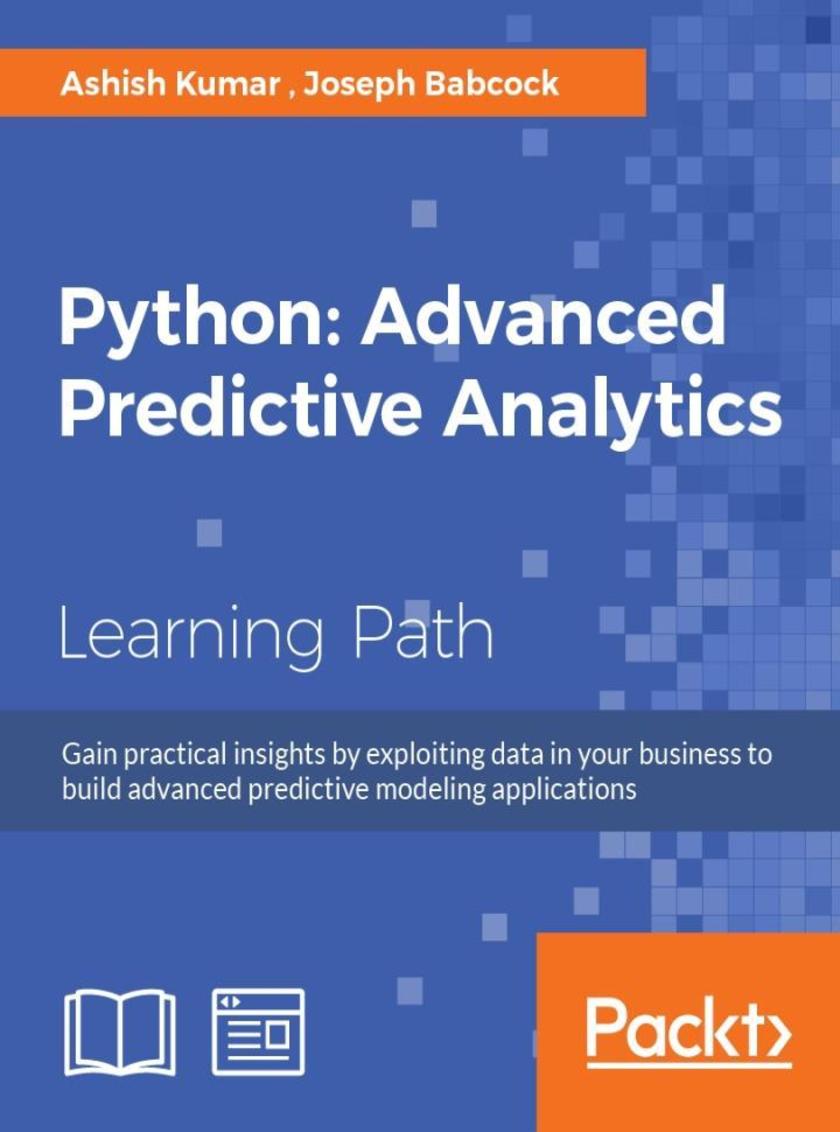
Python: Advanced Predictive Analytics
¥179.84
Gain practical insights by exploiting data in your business to build advanced predictive modeling applications About This Book ? A step-by-step guide to predictive modeling including lots of tips, tricks, and best practices ? Learn how to use popular predictive modeling algorithms such as Linear Regression, Decision Trees, Logistic Regression, and Clustering ? Master open source Python tools to build sophisticated predictive models Who This Book Is For This book is designed for business analysts, BI analysts, data scientists, or junior level data analysts who are ready to move on from a conceptual understanding of advanced analytics and become an expert in designing and building advanced analytics solutions using Python. If you are familiar with coding in Python (or some other programming/statistical/*ing language) but have never used or read about predictive analytics algorithms, this book will also help you. What You Will Learn ? Understand the statistical and mathematical concepts behind predictive analytics algorithms and implement them using Python libraries ? Get to know various methods for importing, cleaning, sub-setting, merging, joining, concatenating, exploring, grouping, and plotting data with pandas and NumPy ? Master the use of Python notebooks for exploratory data analysis and rapid prototyping ? Get to grips with applying regression, classification, clustering, and deep learning algorithms ? Discover advanced methods to analyze structured and unstructured data ? Visualize the performance of models and the insights they produce ? Ensure the robustness of your analytic applications by mastering the best practices of predictive analysis In Detail Social Media and the Internet of Things have resulted in an avalanche of data. Data is powerful but not in its raw form; it needs to be processed and modeled, and Python is one of the most robust tools out there to do so. It has an array of packages for predictive modeling and a suite of IDEs to choose from. Using the Python programming language, analysts can use these sophisticated methods to build scalable analytic applications. This book is your guide to getting started with predictive analytics using Python. You'll balance both statistical and mathematical concepts, and implement them in Python using libraries such as pandas, scikit-learn, and NumPy. Through case studies and code examples using popular open-source Python libraries, this book illustrates the complete development process for analytic applications. Covering a wide range of algorithms for classification, regression, clustering, as well as cutting-edge techniques such as deep learning, this book illustrates explains how these methods work. You will learn to choose the right approach for your problem and how to develop engaging visualizations to bring to life the insights of predictive modeling. Finally, you will learn best practices in predictive modeling, as well as the different applications of predictive modeling in the modern world. The course provides you with highly practical content from the following Packt books: 1. Learning Predictive Analytics with Python 2. Mastering Predictive Analytics with Python Style and approach This course aims to create a smooth learning path that will teach you how to effectively perform predictive analytics using Python. Through this comprehensive course, you’ll learn the basics of predictive analytics and progress to predictive modeling in the modern world.
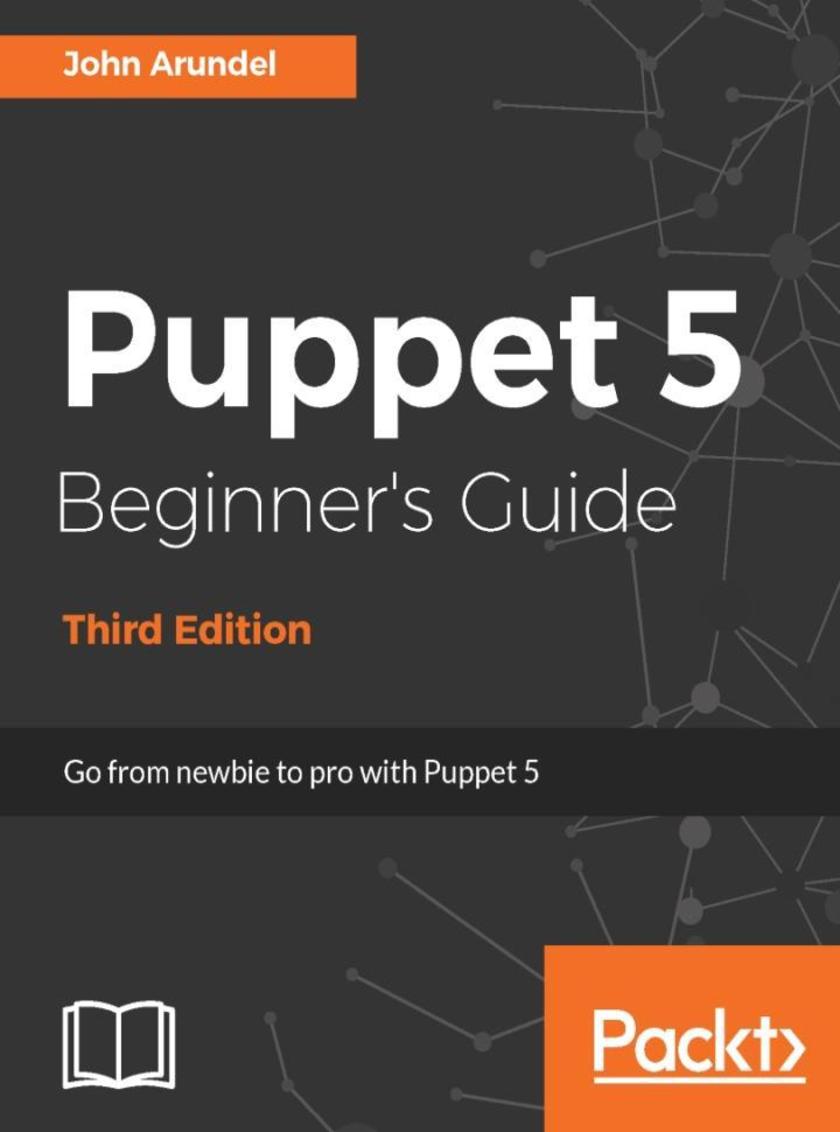
Puppet 5 Beginner's Guide - Third Edition
¥71.93
Puppet 5 Beginner’s Guide, Third Edition is a practical guide that gets you up and running with the very latest features of Puppet 5. About This Book ? Develop skills to run Puppet 5 on single or multiple servers without hiccups ? Use Puppet to create and manage cloud resources such as Amazon EC2 instances ? Take full advantage of powerful new features of Puppet including loops, data types, Hiera integration, and container management Who This Book Is For Puppet 5 Beginner’s Guide, Third Edition is designed for those who are new to Puppet, including system administrators and developers who are looking to manage computer server systems for configuration management. No prior programming or system administration experience is assumed. What You Will Learn ? Understand the latest Puppet 5 features ? Install and set up Puppet and discover the latest and most advanced features ? Configure, build, and run containers in production using Puppet’s industry-leading Docker support ? Deploy configuration files and templates at super-fast speeds and manage user accounts and access control ? Automate your IT infrastructure ? Use the latest features in Puppet 5 onward and its official modules ? Manage clouds, containers, and orchestration ? Get to know the best practices to make Puppet more reliable and increase its performance In Detail Puppet 5 Beginner’s Guide, Third Edition gets you up and running with the very latest features of Puppet 5, including Docker containers, Hiera data, and Amazon AWS cloud orchestration. Go from beginner to confident Puppet user with a series of clear, practical examples to help you manage every aspect of your server setup. Whether you’re a developer, a system administrator, or you are simply curious about Puppet, you’ll learn Puppet skills that you can put into practice right away. With practical steps giving you the key concepts you need, this book teaches you how to install packages and config files, create users, set up scheduled jobs, provision cloud instances, build containers, and so much more. Every example in this book deals with something real and practical that you’re likely to need in your work, and you’ll see the complete Puppet code that makes it happen, along with step-by-step instructions for what to type and what output you’ll see. All the examples are available in a GitHub repo for you to download and adapt for your own server setup. Style and approach This tutorial is packed with quick step-by-step instructions that are immediately applicable for beginners. This is an easy-to-read guide, to learn Puppet from scratch, that explains simply and clearly all you need to know to use this essential IT power tool, while applying these solutions to real-world scenarios.
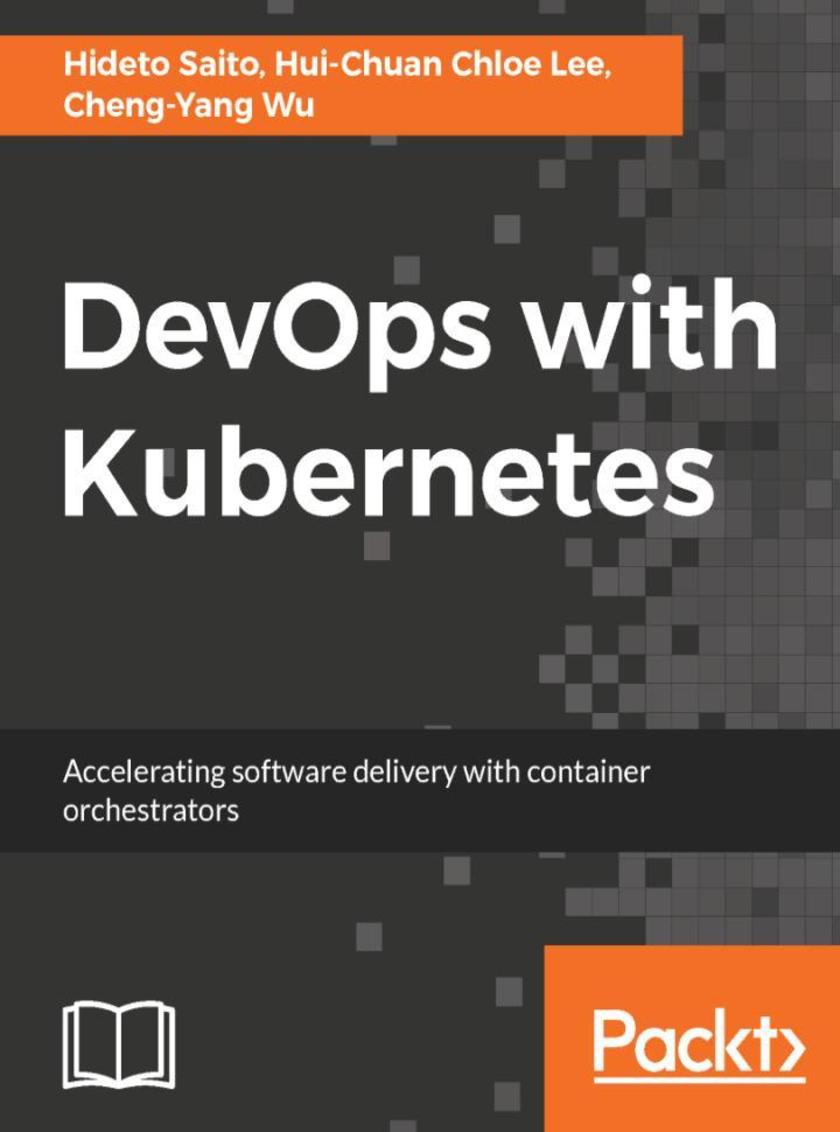
DevOps with Kubernetes
¥90.46
Learn to implement DevOps using Docker & Kubernetes. About This Book ? Learning DevOps, container, and Kubernetes within one book. ? Leverage Kubernetes as a platform to deploy, scale, and run containers efficiently. ? A practical guide towards container management and orchestration Who This Book Is For This book is targeted for anyone, who wants to learn containerization and clustering in a practical way using Kubernetes. No prerequisite skills required, however, essential DevOps skill and public/private Cloud knowledge will accelerate the reading speed. If you’re advanced readers, you can also get a deeper understanding of all the tools and technique described in the book. What You Will Learn ? Learn fundamental and advanced DevOps skills and tools ? Get a comprehensive understanding for container ? Learn how to move your application to container world ? Learn how to manipulate your application by Kubernetes ? Learn how to work with Kubernetes in popular public cloud ? Improve time to market with Kubernetes and Continuous Delivery ? Learn how to monitor, log, and troubleshoot your application with Kubernetes In Detail Containerization is said to be the best way to implement DevOps. Google developed Kubernetes, which orchestrates containers efficiently and is considered the frontrunner in container orchestration. Kubernetes is an orchestrator that creates and manages your containers on clusters of servers. This book will guide you from simply deploying a container to administrate a Kubernetes cluster, and then you will learn how to do monitoring, logging, and continuous deployment in DevOps. The initial stages of the book will introduce the fundamental DevOps and the concept of containers. It will move on to how to containerize applications and deploy them into. The book will then introduce networks in Kubernetes. We then move on to advanced DevOps skills such as monitoring, logging, and continuous deployment in Kubernetes. It will proceed to introduce permission control for Kubernetes resources via attribute-based access control and role-based access control. The final stage of the book will cover deploying and managing your container clusters on the popular public cloud Amazon Web Services and Google Cloud Platform. At the end of the book, other orchestration frameworks, such as Docker Swarm mode, Amazon ECS, and Apache Mesos will be discussed. Style and approach Readers will be taken through fundamental DevOps skills and Kubernetes concept and administration with detailed examples. It introduces comprehensive DevOps topics, including microservices, automation tools, containers, monitoring, logging, continuous delivery, and popular public cloud environments. At each step readers will learn how to leverage Kubernetes in their everyday lives and transform their original delivery pipeline for fast and efficient delivery.
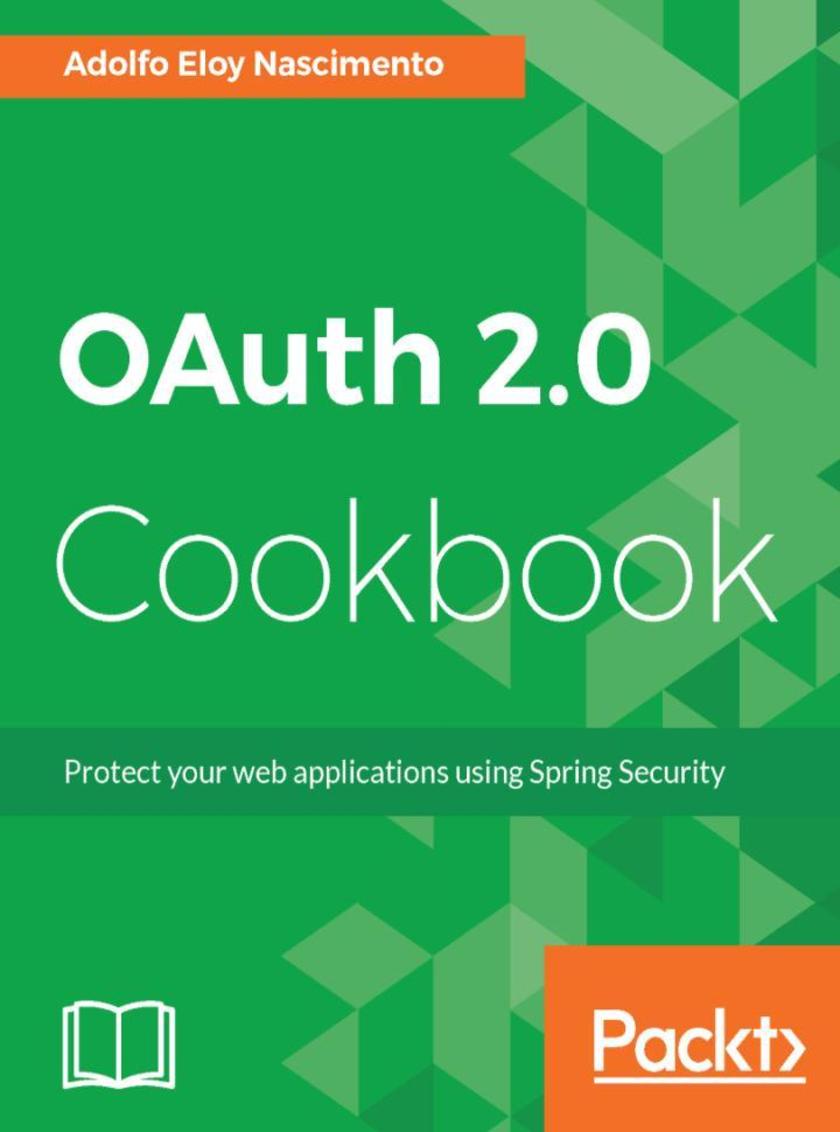
OAuth 2.0 Cookbook
¥80.65
Efficiently integrate OAuth 2.0 to protect your mobile, desktop, Cloud applications and APIs using Spring Security technologies. About This Book ? Interact with public OAuth 2.0 protected APIs such as Facebook, LinkedIn and Google. ? Use Spring Security and Spring Security OAuth2 to implement your own OAuth 2.0 provider ? Learn how to implement OAuth 2.0 native mobile clients for Android applications Who This Book Is For This book targets software engineers and security experts who are looking to develop their skills in API security and OAuth 2.0. Prior programming knowledge and a basic understanding of developing web applications are necessary. As this book's recipes mostly use Spring Security and Spring Security OAuth2, some prior experience with Spring Framework will be helpful. What You Will Learn ? Use Redis and relational databases to store issued access tokens and refresh tokens ? Access resources protected by the OAuth2 Provider using Spring Security ? Implement a web application that dynamically registers itself to the Authorization Server ? Improve the safety of your mobile client using dynamic client registration ? Protect your Android client with Proof Key for Code Exchange ? Protect the Authorization Server from invalid redirection In Detail OAuth 2.0 is a standard protocol for authorization and focuses on client development simplicity while providing specific authorization flows for web applications, desktop applications, mobile phones, and so on. This book also provides useful recipes for solving real-life problems using Spring Security and creating Android applications. The book starts by presenting you how to interact with some public OAuth 2.0 protected APIs such as Facebook, LinkedIn and Google. You will also be able to implement your own OAuth 2.0 provider with Spring Security OAuth2. Next, the book will cover practical scenarios regarding some important OAuth 2.0 profiles such as Dynamic Client Registration, Token Introspection and how to revoke issued access tokens. You will then be introduced to the usage of JWT, OpenID Connect, and how to safely implement native mobile OAuth 2.0 Clients. By the end of this book, you will be able to ensure that both the server and client are protected against common vulnerabilities. Style and approach With the help of real-world examples, this book provides step by step recipes for troubleshooting and extending your API security. The book also helps you with accessing and securing data on mobile, desktop, and cloud apps with OAuth 2.0.
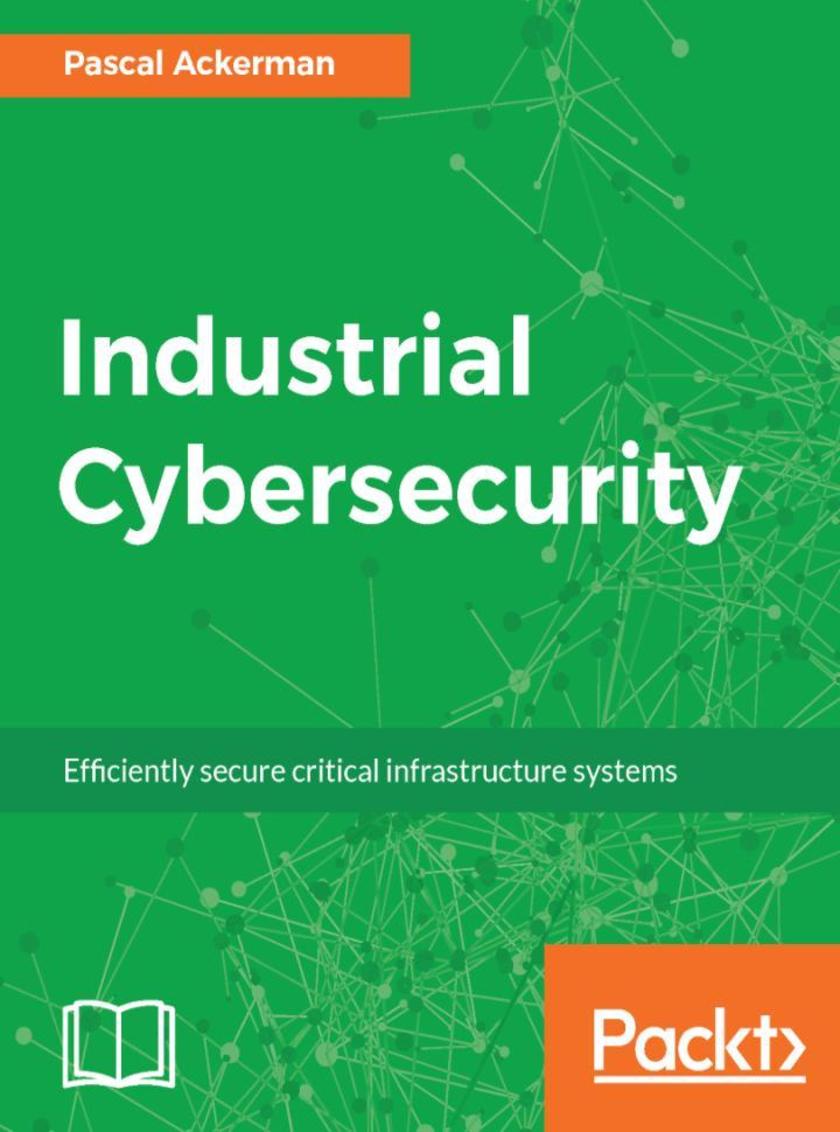
Industrial Cybersecurity
¥80.65
Your one-step guide to understanding industrial cyber security, its control systems, and its operations. About This Book ? Learn about endpoint protection such as anti-malware implementation, updating, monitoring, and sanitizing user workloads and mobile devices ? Filled with practical examples to help you secure critical infrastructure systems efficiently ? A step-by-step guide that will teach you the techniques and methodologies of building robust infrastructure systems Who This Book Is For If you are a security professional and want to ensure a robust environment for critical infrastructure systems, this book is for you. IT professionals interested in getting into the cyber security domain or who are looking at gaining industrial cyber security certifications will also find this book useful. What You Will Learn ? Understand industrial cybersecurity, its control systems and operations ? Design security-oriented architectures, network segmentation, and security support services ? Configure event monitoring systems, anti-malware applications, and endpoint security ? Gain knowledge of ICS risks, threat detection, and access management ? Learn about patch management and life cycle management ? Secure your industrial control systems from design through retirement In Detail With industries expanding, cyber attacks have increased significantly. Understanding your control system’s vulnerabilities and learning techniques to defend critical infrastructure systems from cyber threats is increasingly important. With the help of real-world use cases, this book will teach you the methodologies and security measures necessary to protect critical infrastructure systems and will get you up to speed with identifying unique challenges.Industrial cybersecurity begins by introducing Industrial Control System (ICS) technology, including ICS architectures, communication media, and protocols. This is followed by a presentation on ICS (in) security. After presenting an ICS-related attack scenario, securing of the ICS is discussed, including topics such as network segmentation, defense-in-depth strategies, and protective solutions. Along with practical examples for protecting industrial control systems, this book details security assessments, risk management, and security program development. It also covers essential cybersecurity aspects, such as threat detection and access management. Topics related to endpoint hardening such as monitoring, updating, and anti-malware implementations are also discussed. Style and approach A step-by-step guide to implement Industrial Cyber Security effectively.
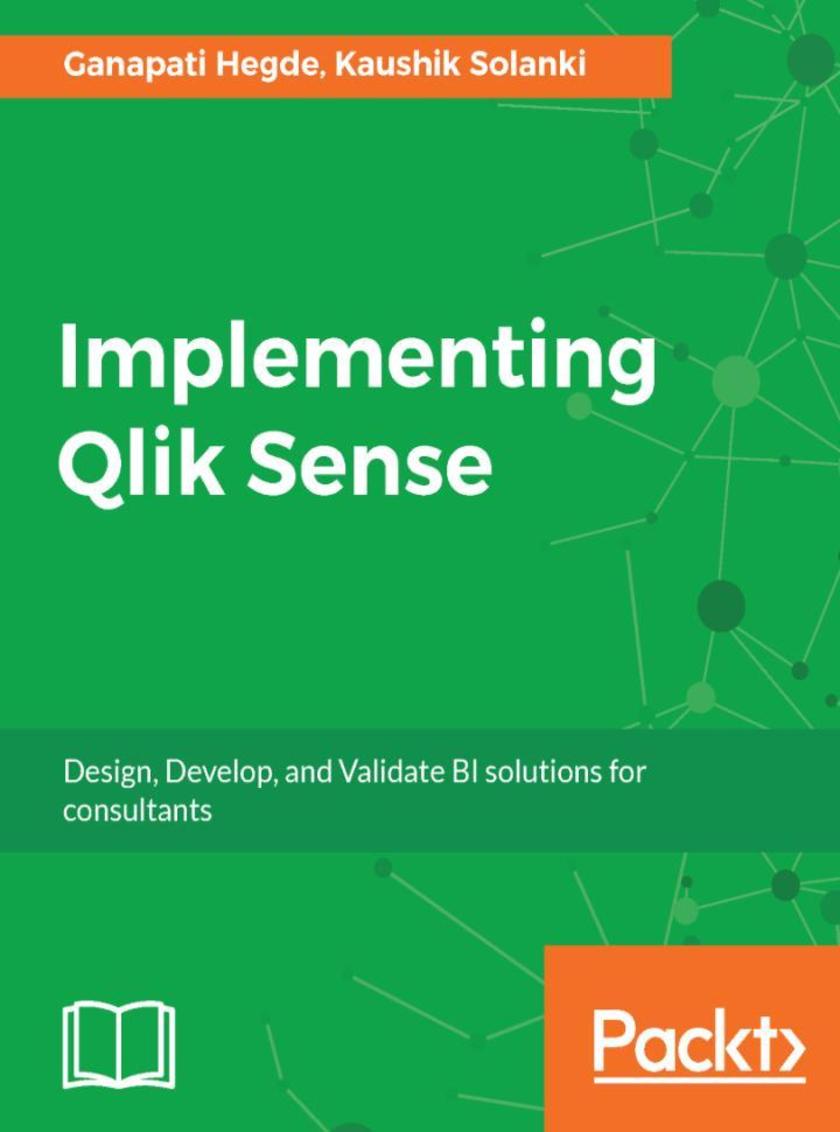
Implementing Qlik Sense
¥99.18
Become a full-fledged Qlik Sense Consultant with the help of this unique guide About This Book ? Become a successful Qlik consultant with the help of this insightful guide ? Build what is in line as well as exceeding your customer’s expectations from your Qlik Sense solutions using this highly practical guide ? Build result-driven optimized BI solutions using Qlik with the help of industry examples Who This Book Is For If you have basic familiarity with Qlik Sense and want to upgrade your skills to become a full-fledged Qlik Consultant, this book is for you. With this book, you will be able to create efficient business intelligence solutions that would fetch client satisfaction, and in turn, more projects. What You Will Learn ? Understand the importance and expectations of a consultant’s role ? Engage with the customer to understand the ir goals and future objectives ? Design the optimum architecture, using the best practices for the development and implementation of your projects ? Ensure successful adoption using real-life examples to make your learning complete ? Learn about the important stages of a Qlik project’s life cycle In Detail Qlik Sense is a leading platform for business intelligence (BI) solutions. Qlik Sense helps organizations in making informed decisions based on the data they have. This book will teach you how to effectively use Qlik for optimum customer satisfaction. You will undergo a metamorphosis from a developer to a consultant who is capable of building the most suitable BI solutions for your clients. The book will take you through several business cases – this will give you enough insight to understand the needs of the client clearly and build a BI solution that meets or exceeds their expectations. Starting from the pre-project activities, you will go to the actual execution of the project, the implementation, and even maintenance. This book will give you all the information you need - from the strategy to requirement gathering to implementing BI solutions using Qlik Sense. The book will empower you to take the right decisions in tricky and diffi cult situations while developing analytics and dashboards. Style and approach This book will be a hands-on guide that will teach you all the what-to-do’s, when-to-do’s, and how-to-do’s for becoming a successful Qlik Sense Consultant. With the help of various business scenarios, the book will cover real-world problems that you can relate to. Various solutions in the book will be backed up by the thought process of why are these solutions used and how you can implement them in your own business environment.
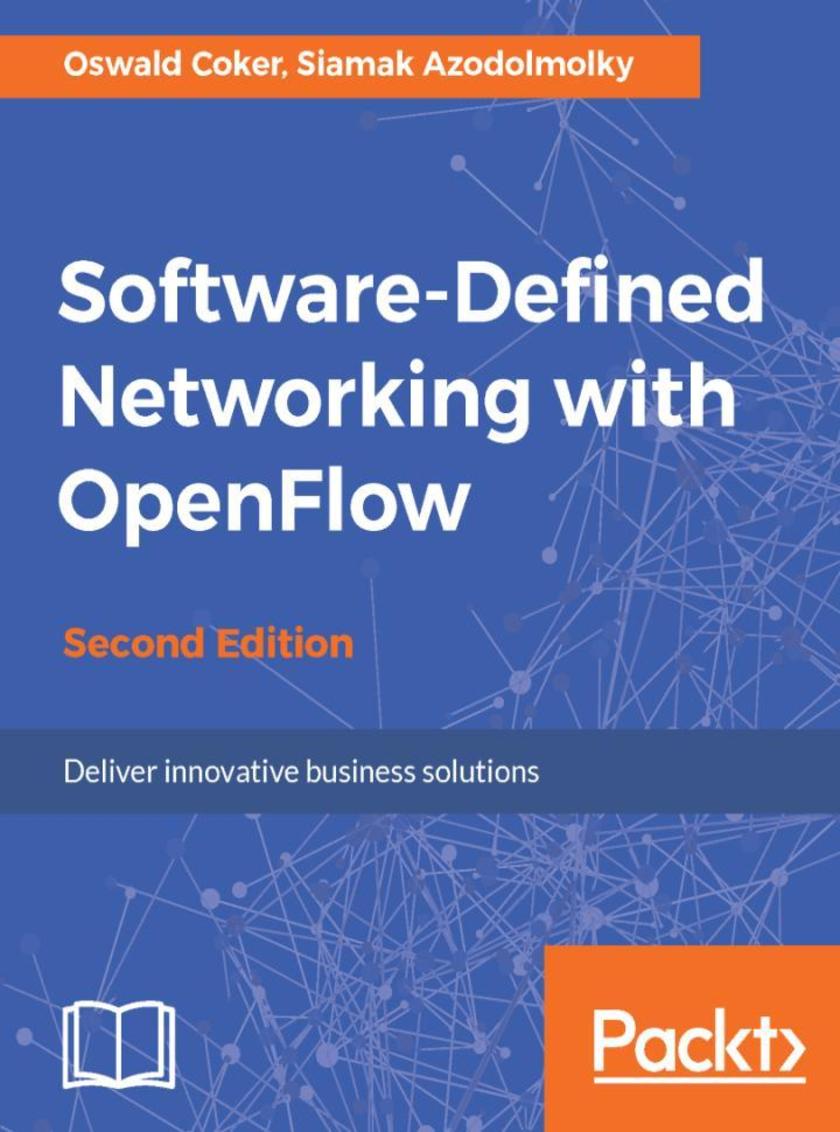
Software-Defined Networking with OpenFlow - Second Edition
¥71.93
Master OpenFlow concepts to improve and make your projects efficient with the help of Software-Defined Networking. About This Book ? Master the required platforms and tools to build network applications with OpenFlow ? Get to grips with the updated OpenFlow and build robust SDN-based solutions ? An end-to-end thorough overview of open-source switches, controllers, and tools Who This Book Is For If you are a network/system administrator or a system engineer and would like to implement OpenFlow concepts and take Software-Defined Networking on your projects to the next level, then this book is for you. If you are aware of broad networking concepts, and are familiar with the day-to-day operation of computer networks, you will find this book very beneficial. What You Will Learn ? Explore Software-Defined Networking and activities around SDN/OpenFlow including OpenFlow messages ? Hardware and software implementations of OpenFlow switches and experiment with Mininet GUI ? Learn about the role of OpenFlow in cloud computing by configuring and setting up the Neutron and Floodlight OpenFlow controller plugins ? Simulate and test utilities, and familiarize yourself with OpenFlow soft switches, controllers, virtualization, and orchestration tools ? Enhance and build environments for Net App development by installing VM's and tools such as Mininet and Wireshark ? Learn about hardware and software switches and get a feel for active open-source projects around SDN and OpenFlow In Detail OpenFlow paves the way for an open, centrally programmable structure, thereby accelerating the effectiveness of Software-Defined Networking. Software-Defined Networking with OpenFlow, Second Edition takes you through the product cycle and gives you an in-depth de*ion of the components and options that are available at each stage. The aim of this book is to help you implement OpenFlow concepts and improve Software-Defined Networking on your projects. You will begin by learning about building blocks and OpenFlow messages such as controller-to-switch and symmetric and asynchronous messages. Next, this book will take you through OpenFlow controllers and their existing implementations followed by network application development. Key topics include the basic environment setup, the Neutron and Floodlight OpenFlow controller, XORPlus OF13SoftSwitch, enterprise and affordable switches such as the Zodiac FX and HP2920. By the end of this book, you will be able to implement OpenFlow concepts and improve Software-Defined Networking in your projects. Style and approach This book is an easy-to-follow and pragmatic guide networking. Each topic adopts a logical approach and provides hints to help you build and deliver SDN Solutions efficiently.
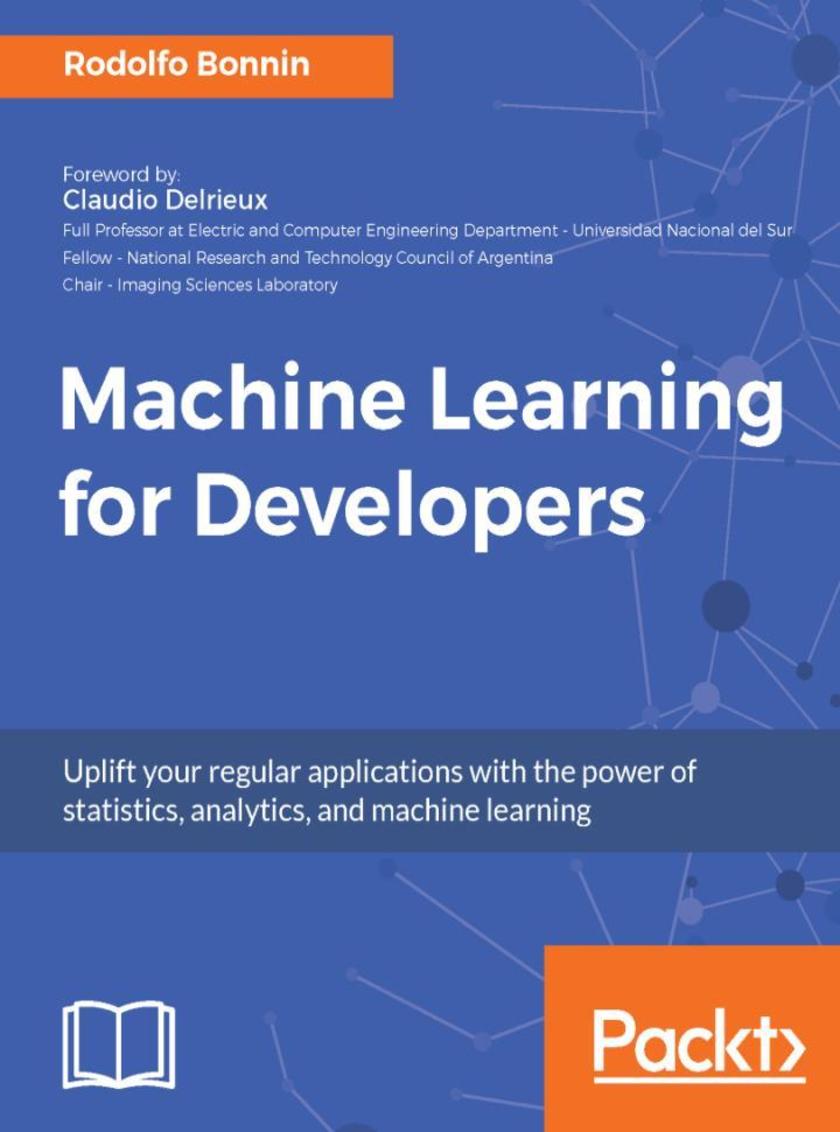
Machine Learning for Developers
¥190.48
Your one-stop guide to becoming a Machine Learning expert. About This Book ? Learn to develop efficient and intelligent applications by leveraging the power of Machine Learning ? A highly practical guide explaining the concepts of problem solving in the easiest possible manner ? Implement Machine Learning in the most practical way Who This Book Is For This book will appeal to any developer who wants to know what Machine Learning is and is keen to use Machine Learning to make their day-to-day apps fast, high performing, and accurate. Any developer who wants to enter the field of Machine Learning can effectively use this book as an entry point. What You Will Learn ? Learn the math and mechanics of Machine Learning via a developer-friendly approach ? Get to grips with widely used Machine Learning algorithms/techniques and how to use them to solve real problems ? Get a feel for advanced concepts, using popular programming frameworks. ? Prepare yourself and other developers for working in the new ubiquitous field of Machine Learning ? Get an overview of the most well known and powerful tools, to solve computing problems using Machine Learning. ? Get an intuitive and down-to-earth introduction to current Machine Learning areas, and apply these concepts on interesting and cutting-edge problems. In Detail Most of us have heard about the term Machine Learning, but surprisingly the question frequently asked by developers across the globe is, “How do I get started in Machine Learning?”. One reason could be attributed to the vastness of the subject area because people often get overwhelmed by the abstractness of ML and terms such as regression, supervised learning, probability density function, and so on. This book is a systematic guide teaching you how to implement various Machine Learning techniques and their day-to-day application and development. You will start with the very basics of data and mathematical models in easy-to-follow language that you are familiar with; you will feel at home while implementing the examples. The book will introduce you to various libraries and frameworks used in the world of Machine Learning, and then, without wasting any time, you will get to the point and implement Regression, Clustering, classification, Neural networks, and more with fun examples. As you get to grips with the techniques, you’ll learn to implement those concepts to solve real-world scenarios for ML applications such as image analysis, Natural Language processing, and anomaly detections of time series data. By the end of the book, you will have learned various ML techniques to develop more efficient and intelligent applications. Style and approach This book gives you a glimpse of Machine Learning Models and the application of models at scale using clustering, classification, regression and reinforcement learning with fun examples. Hands-on examples will be presented to understand the power of problem solving with Machine Learning and Advanced architectures, software installation, and configuration.
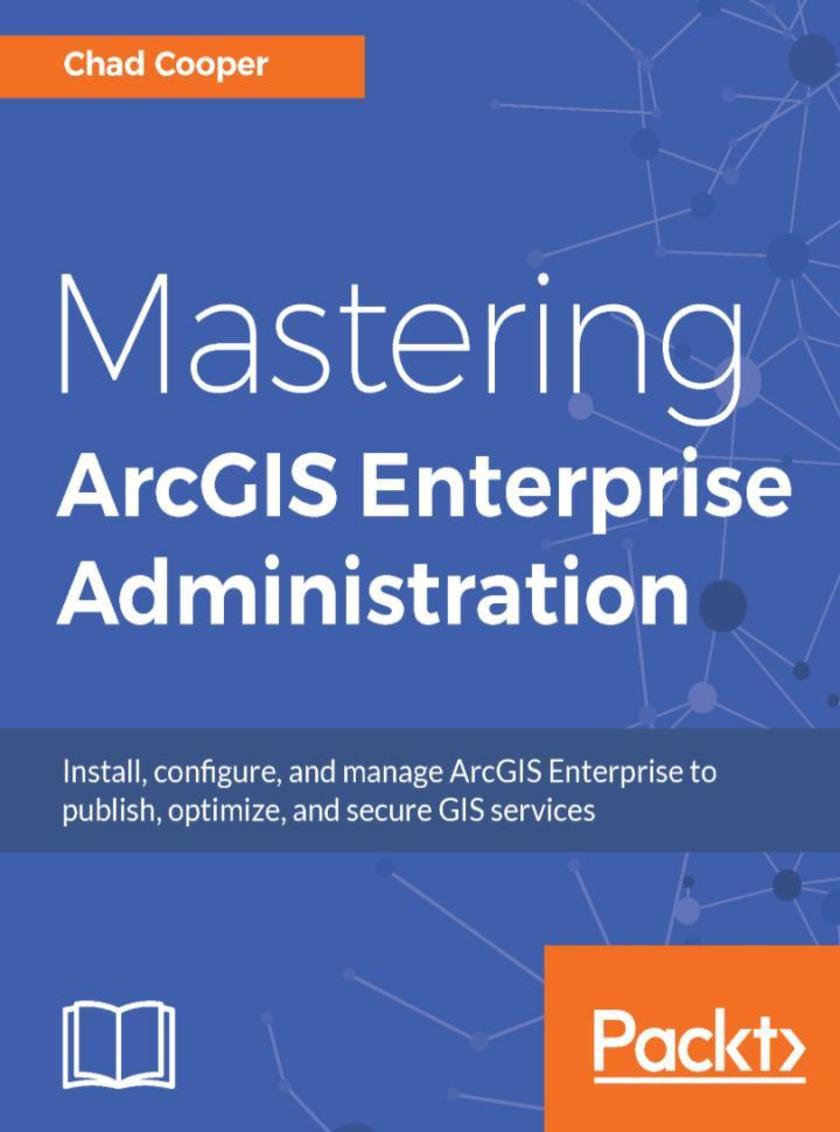
Mastering ArcGIS Enterprise Administration
¥90.46
Learn how to confidently install, configure, secure, and fully utilize your ArcGIS Enterprise system. About This Book ? Install and configure the components of ArcGIS Enterprise to meet your organization's requirements ? Administer all aspects of ArcGIS Enterprise through user interfaces and APIs ? Optimize and Secure ArcGIS Enterprise to make it run efficiently and effectively Who This Book Is For This book will be geared toward senior GIS analysts, GIS managers, GIS administrators, DBAs, GIS architects, and GIS engineers that need to install, configure, and administer ArcGIS Enterprise 10.5.1. What You Will Learn ? Effectively install and configure ArcGIS Enterprise, including the Enterprise geodatabase, ArcGIS Server, and Portal for ArcGIS ? Incorporate different methodologies to manage and publish services ? Utilize the security methods available in ArcGIS Enterprise ? Use Python and Python libraries from Esri to automate administrative tasks ? Identify the common pitfalls and errors to get your system back up and running quickly from an outage In Detail ArcGIS Enterprise, the next evolution of the ArcGIS Server product line, is a full-featured mapping and analytics platform. It includes a powerful GIS web services server and a dedicated Web GIS infrastructure for organizing and sharing your work. You will learn how to first install ArcGIS Enterprise to then plan, design, and finally publish and consume GIS services. You will install and configure an Enterprise geodatabase and learn how to administer ArcGIS Server, Portal, and Data Store through user interfaces, the REST API, and Python *s. This book starts off by explaining how ArcGIS Enterprise 10.5.1 is different from earlier versions of ArcGIS Server and covers the installation of all the components required for ArcGIS Enterprise. We then move on to geodatabase administration and content publication, where you will learn how to use ArcGIS Server Manager to view the server logs, stop and start services, publish services, define users and roles for security, and perform other administrative tasks. You will also learn how to apply security mechanisms on ArcGIS Enterprise and safely expose services to the public in a secure manner. Finally, you’ll use the RESTful administrator API to automate server management tasks using the Python *ing language. You’ll learn all the best practices and troubleshooting methods to streamline the management of all the interconnected parts of ArcGIS Enterprise. Style and approach The book takes a pragmatic approach, starting with installation & configuration of ArcGIS Enterprise to finally building a robust GIS web infrastructure for your organization.
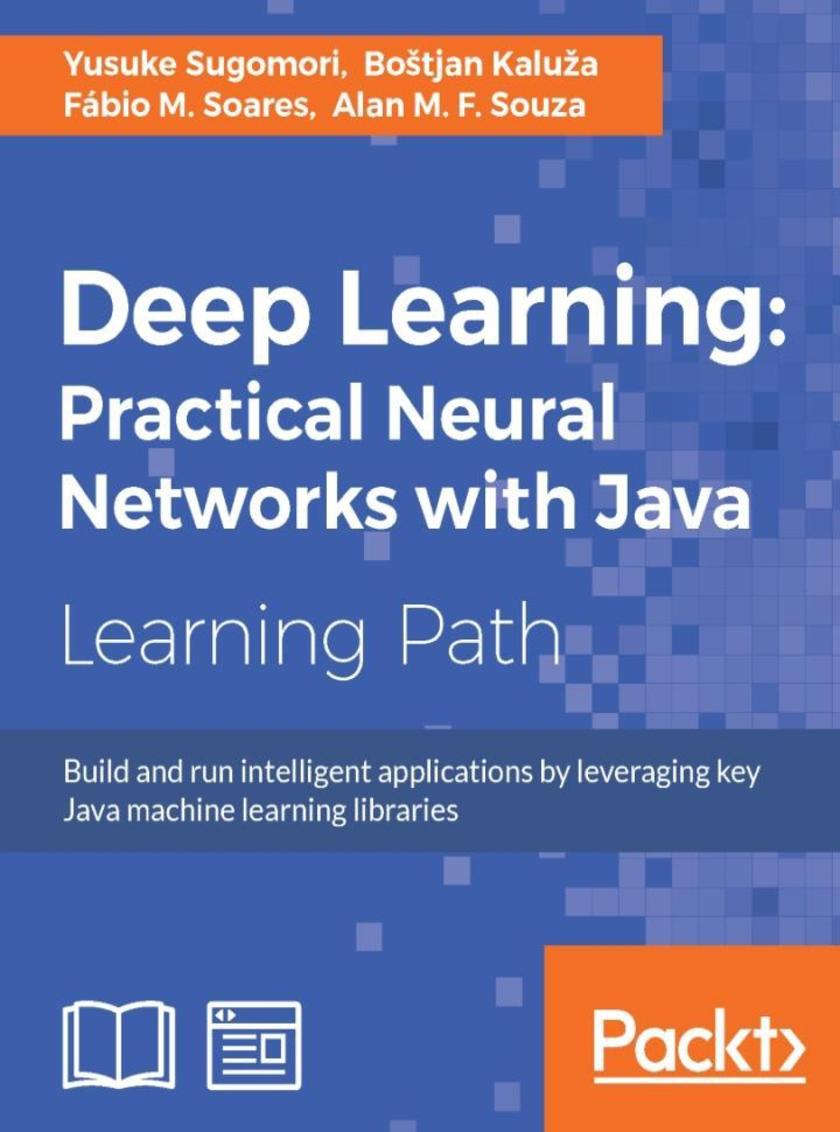
Deep Learning: Practical Neural Networks with Java
¥152.59
Build and run intelligent applications by leveraging key Java machine learning libraries About This Book ? Develop a sound strategy to solve predictive modelling problems using the most popular machine learning Java libraries. ? Explore a broad variety of data processing, machine learning, and natural language processing through diagrams, source code, and real-world applications ? This step-by-step guide will help you solve real-world problems and links neural network theory to their application Who This Book Is For This course is intended for data scientists and Java developers who want to dive into the exciting world of deep learning. It will get you up and running quickly and provide you with the skills you need to successfully create, customize, and deploy machine learning applications in real life. What You Will Learn ? Get a practical deep dive into machine learning and deep learning algorithms ? Explore neural networks using some of the most popular Deep Learning frameworks ? Dive into Deep Belief Nets and Stacked Denoising Autoencoders algorithms ? Apply machine learning to fraud, anomaly, and outlier detection ? Experiment with deep learning concepts, algorithms, and the toolbox for deep learning ? Select and split data sets into training, test, and validation, and explore validation strategies ? Apply the code generated in practical examples, including weather forecasting and pattern recognition In Detail Machine learning applications are everywhere, from self-driving cars, spam detection, document search, and trading strategies, to speech recognitionStarting with an introduction to basic machine learning algorithms, this course takes you further into this vital world of stunning predictive insights and remarkable machine intelligence. This course helps you solve challenging problems in image processing, speech recognition, language modeling. You will discover how to detect anomalies and fraud, and ways to perform activity recognition, image recognition, and text. You will also work with examples such as weather forecasting, disease diagnosis, customer profiling, generalization, extreme machine learning and more. By the end of this course, you will have all the knowledge you need to perform deep learning on your system with varying complexity levels, to apply them to your daily work. The course provides you with highly practical content explaining deep learning with Java, from the following Packt books: 1. Java Deep Learning Essentials 2. Machine Learning in Java 3. Neural Network Programming with Java, Second Edition Style and approach This course aims to create a smooth learning path that will teach you how to effectively use deep learning with Java with other de facto components to get the most out of it. Through this comprehensive course, you’ll learn the basics of predictive modelling and progress to solve real-world problems and links neural network theory to their application
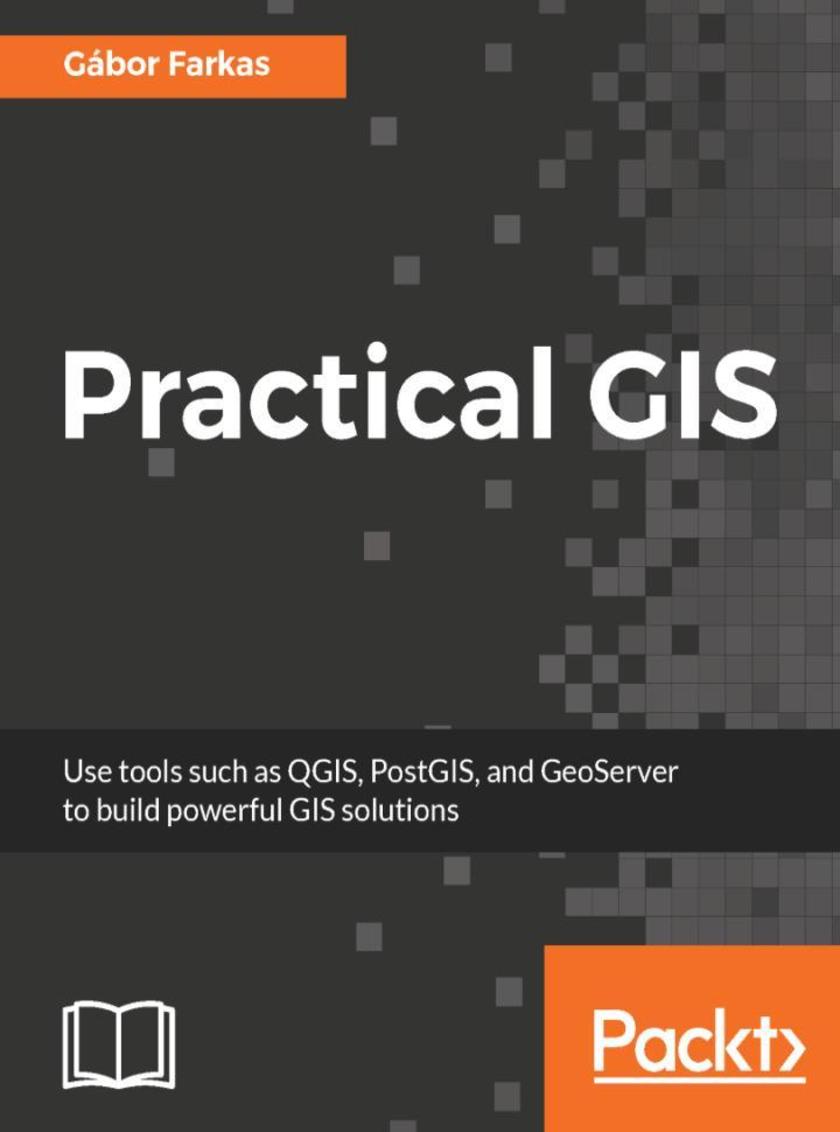
Practical GIS
¥90.46
Learn the basics of Geographic Information Systems by solving real-world problems with powerful open source tools About This Book ? This easy-to-follow guide allows you to manage and analyze geographic data with ease using open source tools ? Publish your geographical data online ? Learn the basics of geoinformatics in a practical way by solving problems Who This Book Is For The book is for IT professionals who have little or no knowledge of GIS. It’s also useful for those who are new to the GIS field who don’t want to spend a lot of money buying licenses of commercial tools and training. What You Will Learn ? Collect GIS data for your needs ? Store the data in a PostGIS database ? Exploit the data using the power of the GIS queries ? Analyze the data with basic and more advanced GIS tools ? Publish your data and share it with others ? Build a web map with your published data In Detail The most commonly used GIS tools automate tasks that were historically done manually—compiling new maps by overlaying one on top of the other or physically cutting maps into pieces representing specific study areas, changing their projection, and getting meaningful results from the various layers by applying mathematical functions and operations. This book is an easy-to-follow guide to use the most matured open source GIS tools for these tasks. We’ll start by setting up the environment for the tools we use in the book. Then you will learn how to work with QGIS in order to generate useful spatial data. You will get to know the basics of queries, data management, and geoprocessing. After that, you will start to practice your knowledge on real-world examples. We will solve various types of geospatial analyses with various methods. We will start with basic GIS problems by imitating the work of an enthusiastic real estate agent, and continue with more advanced, but typical tasks by solving a decision problem. Finally, you will find out how to publish your data (and results) on the web. We will publish our data with QGIS Server and GeoServer, and create a basic web map with the API of the lightweight Leaflet web mapping library. Style and approach The book guides you step by step through each of the core concepts of the GIS toolkit, building an overall picture of its capabilities. This guide approaches the topic systematically, allowing you to build upon what you learned in previous chapters. By the end of this book, you’ll have an understanding of the aspects of building a GIS system and will be able to take that knowledge with you to whatever project calls for it.
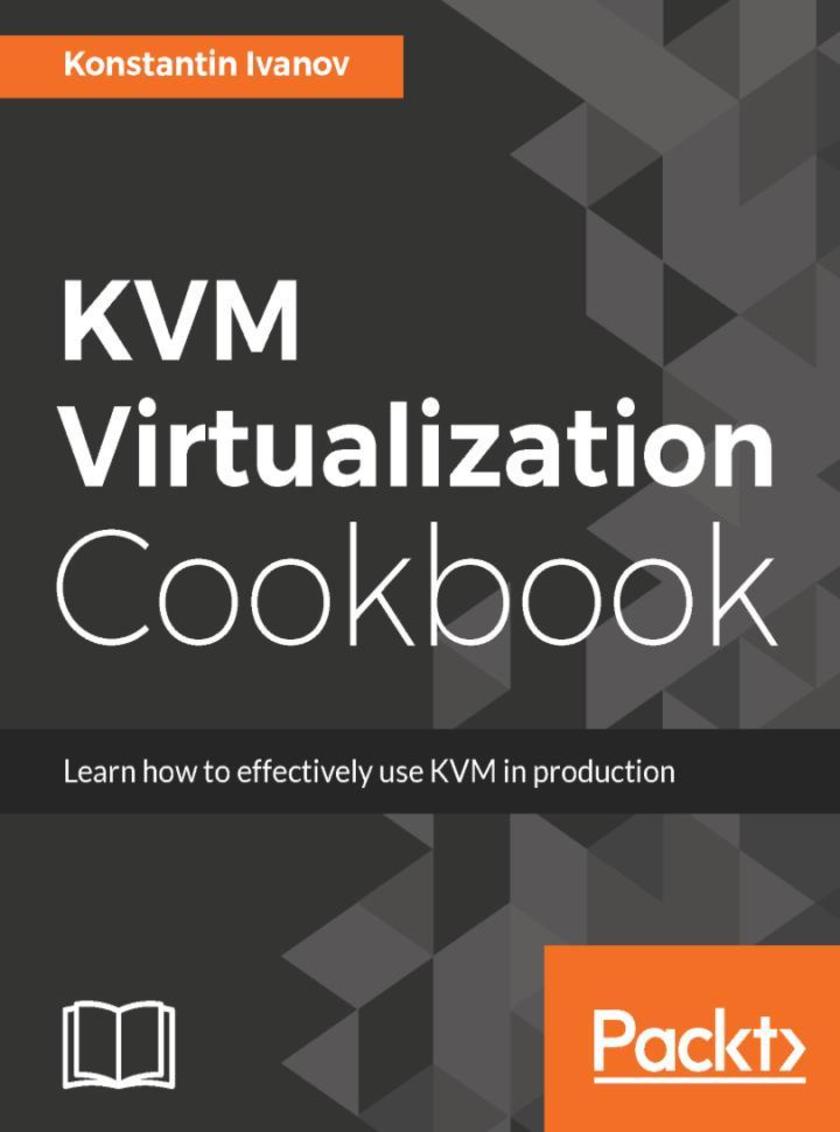
KVM Virtualization Cookbook
¥80.65
Deploy, manage, and scale virtual instances using Kernel-based Virtual Machines About This Book ? Build, manage and scale virtual machines with practical step-by-step examples ? Leverage the libvirt user-space tools and libraries to manage the life-cycle of KVM instances ? Deploy and scale applications inside KVM virtual machines with OpenStack Who This Book Is For If you are a system administrator working KVM virtualization, this book will help you grow on your expertise of working with the infrastructure to manage things in a better way. You should have a knowledge of working with Linux based systems. What You Will Learn ? Deploy different workloads in isolation with KVM virtualization and better utilize the available compute resources ? Explore the benefits of running applications with KVM and learn to prevent the “bad-neighbor” effect ? Leveraging various networking technologies in the context of virtualization with Open vSwitch and the Linux bridge. ? Create KVM instances using Python and inspect running KVM instances ? Understand Kernel Tuning for enhanced KVM performance and better memory utilization In Detail Virtualization technologies such as KVM allow for better control over the available server resources, by deploying multiple virtual instances on the same physical host, or clusters of compute resources. With KVM it is possible to run various workloads in isolation with the hypervisor layer providing better tenant isolation and higher degree of security. This book will provide a deep dive into deploying KVM virtual machines using qemu and libvirt and will demonstrate practical examples on how to run, scale, monitor, migrate and backup such instances. You will also discover real production ready recipes on deploying KVM instances with OpenStack and how to programatically manage the life cycle of KVM virtual machines using Python. You will learn numerous tips and techniques which will help you deploy & plan the KVM infrastructure. Next, you will be introduced to the working of libvirt libraries and the iPython development environment. Finally, you will be able to tune your Linux kernel for high throughput and better performance. By the end of this book, you will gain all the knowledge needed to be an expert in working with the KVM virtualization infrastructure. Style and approach This book takes a complete practical approach with many step-by-step example recipes on how to use KVM in production. The book assumes certain level of expertise with Linux systems and virtualization in general. Some knowledge of Python programming is encouraged, to fully take advantage of the code recipes.
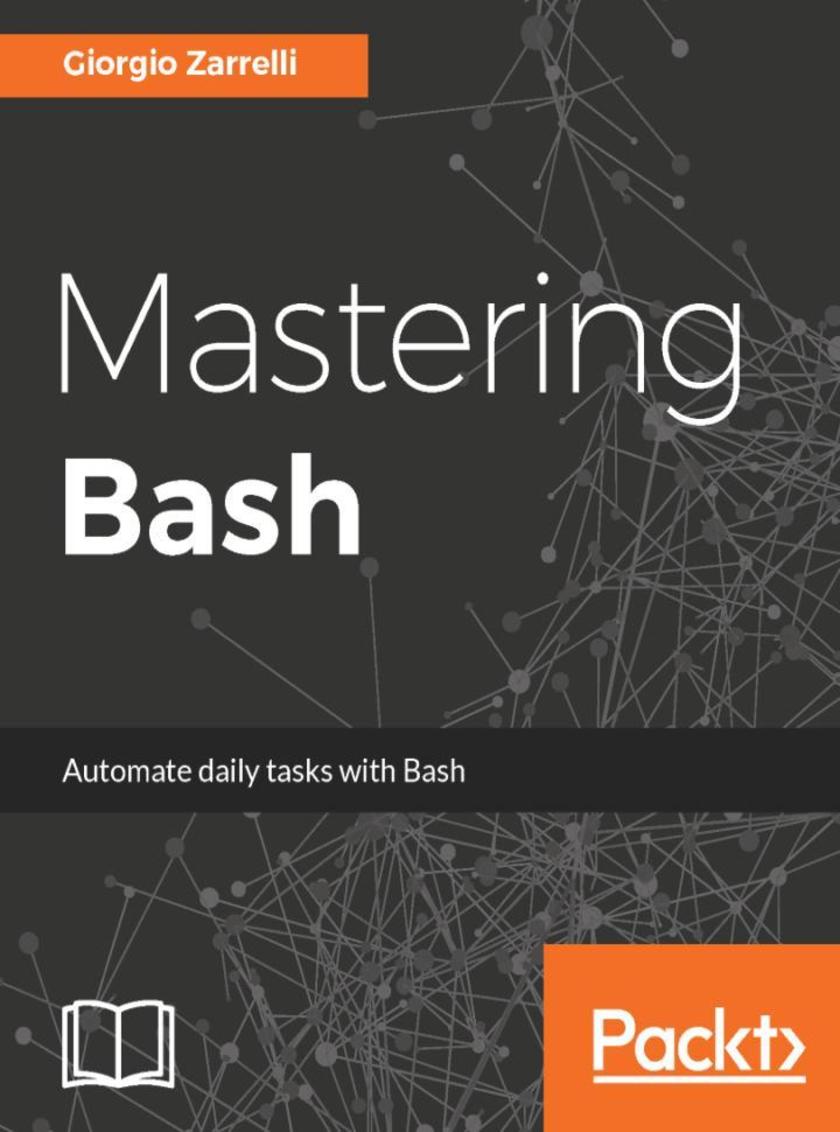
Mastering Bash
¥80.65
Your one stop guide to making the most out of Bash programming About This Book ? From roots to leaves, learn how to program in Bash and automate daily tasks, pouring some spice in your *s ? Daemonize a * and make a real service of it, ensuring it’s available at any time to process user-fed data or commands ? This book provides functional examples that show you practical applications of commands Who This Book Is For If you're a power user or system administrator involved in writing Bash *s to automate tasks, then this book is for you. This book is also ideal for advanced users who are engaged in complex daily tasks. What You Will Learn ? Understand Bash right from the basics and progress to an advanced level ? Customise your environment and automate system routine tasks ? Write structured *s and create a command-line interface for your *s ? Understand arrays, menus, and functions ? Securely execute remote commands using ssh ? Write Nagios plugins to automate your infrastructure checks ? Interact with web services, and a Slack notification * ? Find out how to execute subshells and take advantage of parallelism ? Explore inter-process communication and write your own daemon In Detail System administration is an everyday effort that involves a lot of tedious tasks, and devious pits. Knowing your environment is the key to unleashing the most powerful solution that will make your life easy as an administrator, and show you the path to new heights. Bash is your Swiss army knife to set up your working or home environment as you want, when you want. This book will enable you to customize your system step by step, making your own real, virtual, home out of it. The journey will take you swiftly through the basis of the shell programming in Bash to more interesting and challenging tasks. You will be introduced to one of the most famous open source monitoring systems—Nagios, and write complex programs with it in any languages. You’ll see how to perform checks on your sites and applications. Moving on, you’ll discover how to write your own daemons so you can create your services and take advantage of inter-process communication to let your *s talk to each other. So, despite these being everyday tasks, you’ll have a lot of fun on the way. By the end of the book, you will have gained advanced knowledge of Bash that will help you automate routine tasks and manage your systems. Style and approach This book presents step-by-step instructions and expert advice on working with Bash and writing *s. Starting from the basics, this book serves as a reference manual where you can find handy solutions and advice to make your *s flexible and powerful.
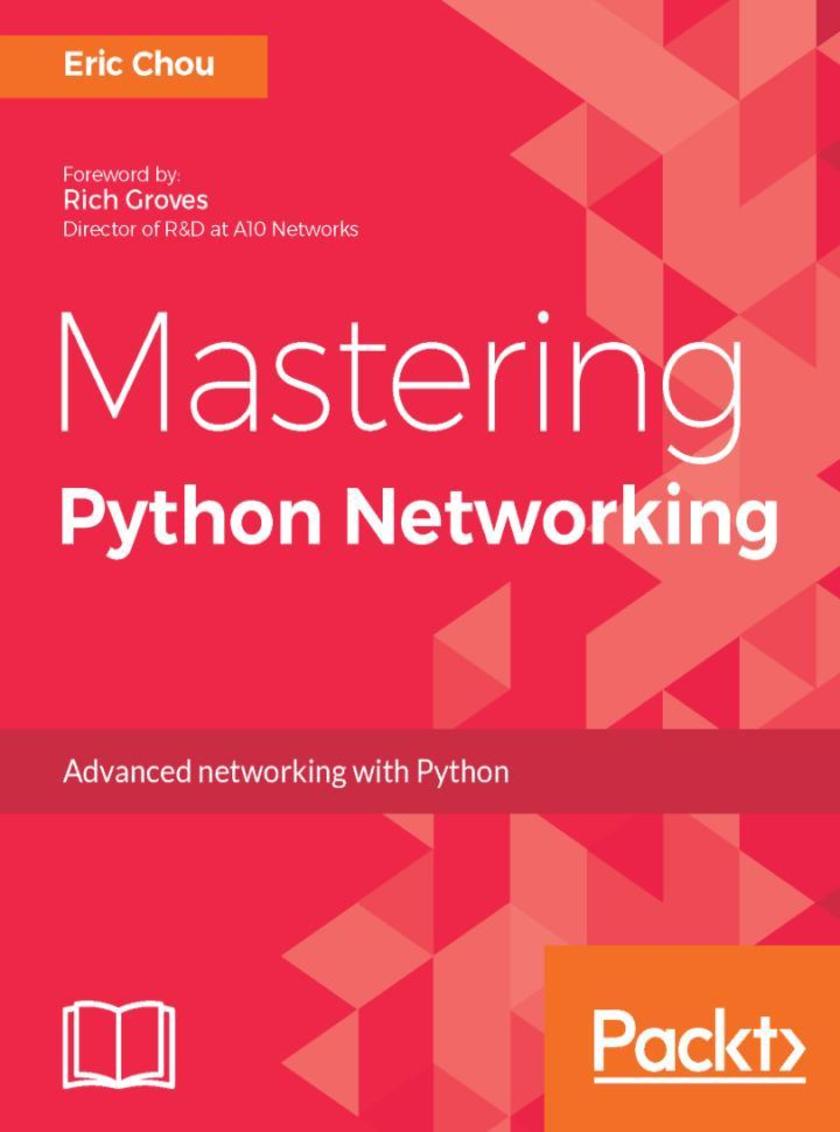
Mastering Python Networking
¥90.46
Become an expert in implementing advanced, network-related tasks with Python. About This Book ? Build the skills to perform all networking tasks using Python with ease ? Use Python for network device automation, DevOps, and software-defined networking ? Get practical guidance to networking with Python Who This Book Is For If you are a network engineer or a programmer who wants to use Python for networking, then this book is for you. A basic familiarity with networking-related concepts such as TCP/IP and a familiarity with Python programming will be useful. What You Will Learn ? Review all the fundamentals of Python and the TCP/IP suite ? Use Python to execute commands when the device does not support the API or programmatic interaction with the device ? Implement automation techniques by integrating Python with Cisco, Juniper, and Arista eAPI ? Integrate Ansible using Python to control Cisco, Juniper, and Arista networks ? Achieve network security with Python ? Build Flask-based web-service APIs with Python ? Construct a Python-based migration plan from a legacy to scalable SDN-based network. In Detail This book begins with a review of the TCP/ IP protocol suite and a refresher of the core elements of the Python language. Next, you will start using Python and supported libraries to automate network tasks from the current major network vendors. We will look at automating traditional network devices based on the command-line interface, as well as newer devices with API support, with hands-on labs. We will then learn the concepts and practical use cases of the Ansible framework in order to achieve your network goals. We will then move on to using Python for DevOps, starting with using open source tools to test, secure, and analyze your network. Then, we will focus on network monitoring and visualization. We will learn how to retrieve network information using a polling mechanism, ?ow-based monitoring, and visualizing the data programmatically. Next, we will learn how to use the Python framework to build your own customized network web services. In the last module, you will use Python for SDN, where you will use a Python-based controller with OpenFlow in a hands-on lab to learn its concepts and applications. We will compare and contrast OpenFlow, OpenStack, OpenDaylight, and NFV. Finally, you will use everything you’ve learned in the book to construct a migration plan to go from a legacy to a scalable SDN-based network. Style and approach An easy-to-follow guide packed with hands-on examples of using Python for network device automation, DevOps, and SDN.




 购物车
购物车 个人中心
个人中心



